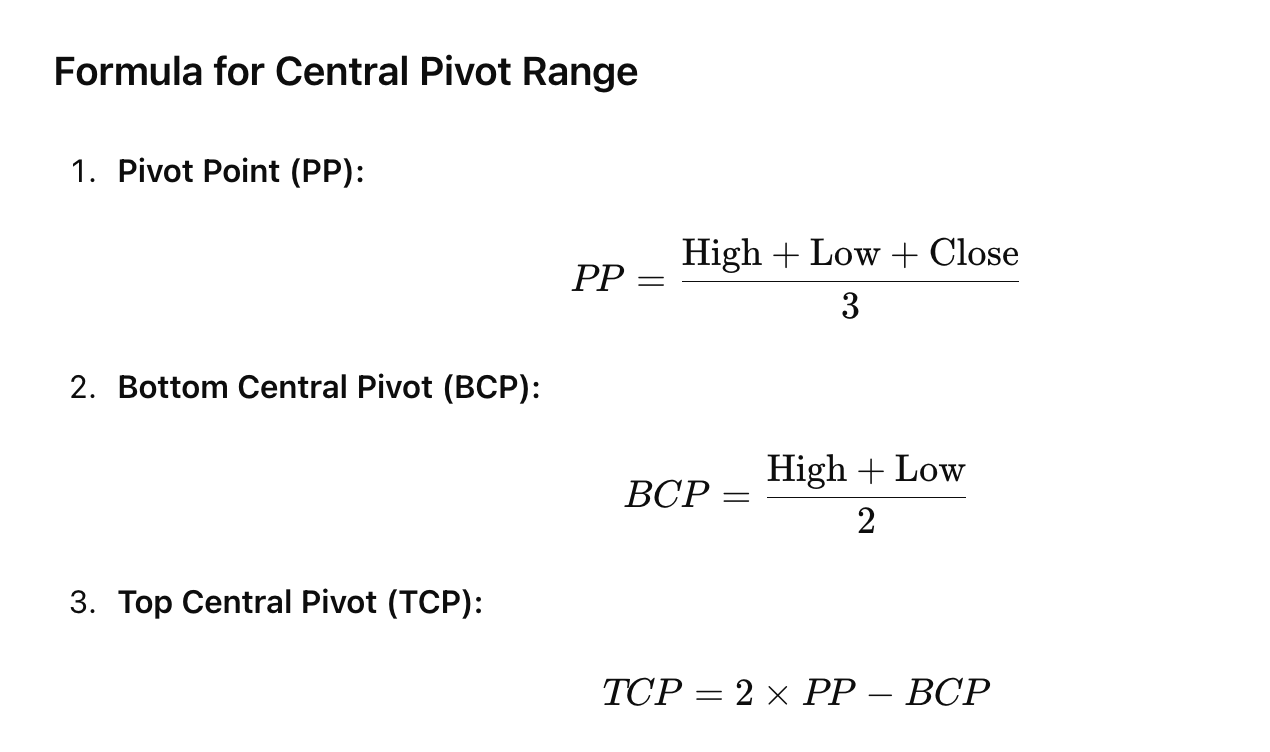Python Code to Calculate CPR - Central Pivot Range
The Central Pivot Range (CPR) is a popular technical analysis tool used by traders to identify potential support and resistance levels in financial markets. It consists of three levels: the Pivot Point (PP), the Bottom Central Pivot (BCP), and the Top Central Pivot (TCP). Here's how you can calculate the Central Pivot Range in Python:

Below is a Python code example to calculate the Central Pivot Range given a list of daily high, low, and close prices.
def calculate_cpr(high, low, close): """ Calculate the Central Pivot Range (CPR) for given high, low, and close prices. Parameters: high (float): The high price of the day low (float): The low price of the day close (float): The closing price of the day Returns: tuple: A tuple containing (Pivot Point, Bottom Central Pivot, Top Central Pivot) """ # Calculate Pivot Point (PP) pp = (high + low + close) / 3 # Calculate Bottom Central Pivot (BCP) bcp = (high + low) / 2 # Calculate Top Central Pivot (TCP) tcp = 2 * pp - bcp return pp, bcp, tcp# Example datahigh_price = 120.0low_price = 110.0close_price = 115.0# Calculate CPRpivot_point, bottom_central_pivot, top_central_pivot = calculate_cpr(high_price, low_price, close_price)print(f"Pivot Point (PP): {pivot_point:.2f}")print(f"Bottom Central Pivot (BCP): {bottom_central_pivot:.2f}")print(f"Top Central Pivot (TCP): {top_central_pivot:.2f}")Explanation
- Pivot Point (PP): The average of the high, low, and close prices. It acts as a primary support/resistance level.
- Bottom Central Pivot (BCP): The average of the high and low prices, serving as a support level.
- Top Central Pivot (TCP): Derived from the pivot point and BCP, acting as a resistance level.
1 comment
- caa- July 25 2024 21:37:14
